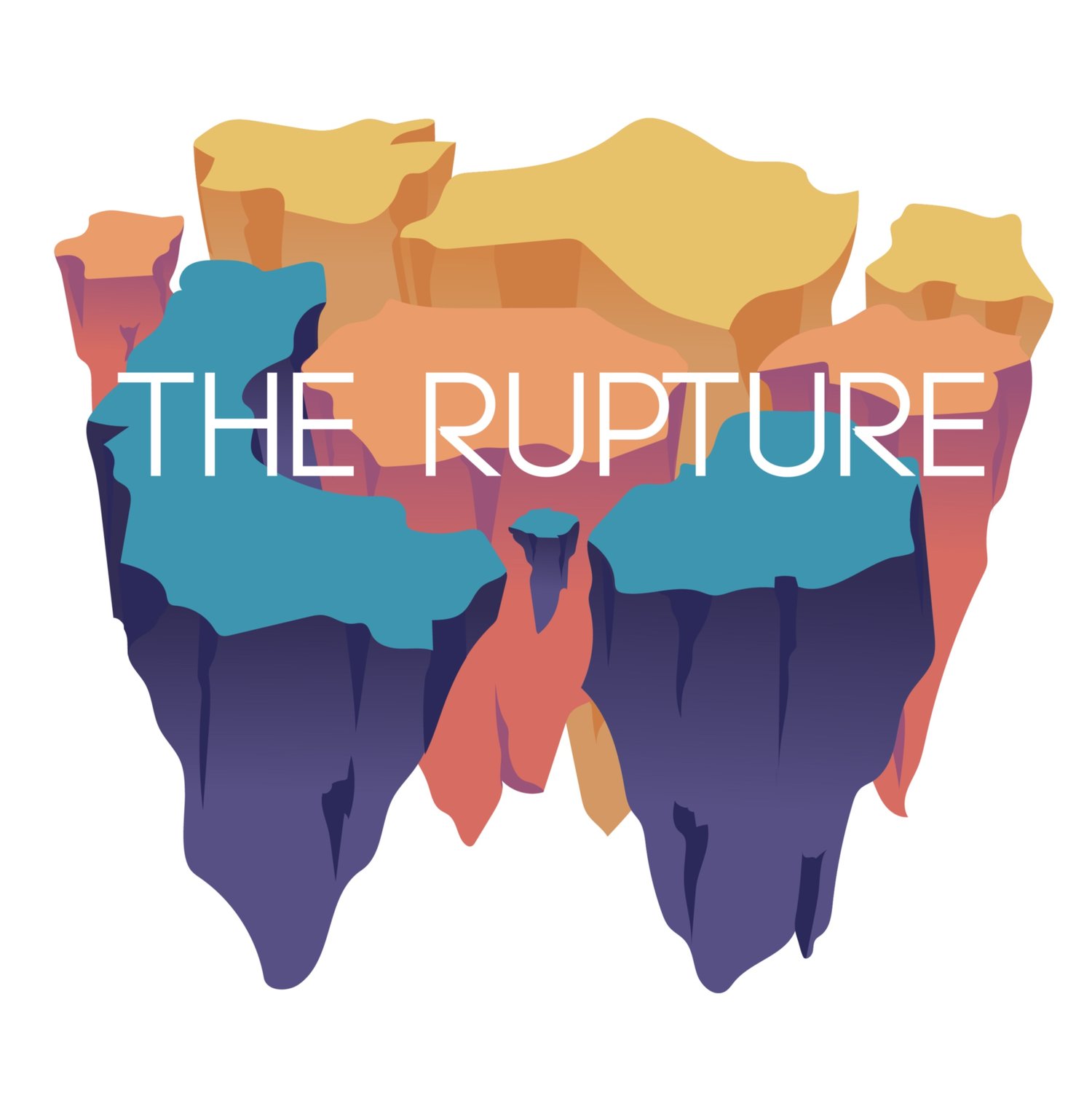
His story, "Lame Head," appeared in Issue Sixty-Six of The Collagist.
Here, Andrew R. Touhy talks with interviewer William Hoffacker about names, time, and dreams.
Please tell us about the origins of your story, “Lame Head.” What sparked the initial idea and caused you to start writing the first draft?
If I recall correctly, the outline of the piece came to me in a dream. The next morning I set to work getting what I could down in sketch form. I had something like ten written pages of moments or “Lame Head” scenes that hung rather loosely together. So the story began in vignettes and pretty much stayed so, although over time, draft by draft, I tried to flesh them out and build up more of a traditional narrative arc, scant as that may be.
I was unemployed at the time, I should say, biking around Berkeley with a handlebar basket for groceries and such. Laid off, like Lame Head and the plastic rental plants, when the first dotcom bubble burst. And I was thinking a lot about “positions” we hold in our daily lives. Identity is always on the table when I put a character together. Who am I today? Who was I before? Who will I be/allow myself to be tomorrow? There are all these markers out there, designators of who and what we are and should be—should want to be. But how do we really know who we are, come to own who we really are, contradictions, competing desires, lucky breaks and warts and all? To this day I struggle with what I can only call this condition. Back then, with no job, no income, and no place I needed to be from one hour to the next (with the exception of a donation-based yoga class), I was certainly feeling rudderless, although I was working hard at becoming a writer. That was one identity I knew I wanted to adopt or . . . better yet, absorb to the point of second nature.
So I guess you could say I was divided up psychologically. And I found I somehow needed to express this, to give it form in the materials of the material. I didn’t think this through, though. It was an instinctive, even playful choice. Hence the answer to your next question.
The protagonist of this story is known to the audience by three different names (Lame Head, Editorial Assistant, and Plain Me), and which one the narrator uses in a given moment seems to depend on the character’s circumstances and/or mood. How did you come to the decision to refer to your character only by these nicknames and never a more conventional name?
Lame Head was Lame Head’s name from the get-go. He pretty much thinks of himself rather lamely as Lame Head, so I ran with it. I’m sure I thought it was a funny name to use, initially. Meaning, it sounds absurd, like a dumb thing to hang on a character, a kind of pronouncement, but at the same time it is also a pointed attempt to deflate his big-headed self-consciousness. There’s a lot going on in his head, not much of note exactly, but a lot of chatter and static and worry and judgment and fear, etc. He’s pretty self-absorbed and aware of that fact, so it could easily be a name he saddles himself with, as we all do. Oh, you Bone Head you and so on. But in Lame Head’s case, the label has swallowed him a bit like Jonah’s whale. Lame Head is the way—whatever his real, given name is—the character moves through the world now.
So, yes, you could say that his name encapsulates his mood in the story, or his emotional state. His mental state too. He clearly feels and acts—and is—out of sorts, cut adrift, searching, although not very effectively, for something to either anchor or activate him. For me the story is a slow march toward becoming. Or more accurately: a slow march toward understanding that a becoming is possible. Part of that possible becoming is simply realizing that it is okay to be him, that he’s not as bad as he makes himself out to be. At least I hope that’s in there. He’s been selling himself short for a long time, in other words. But it’s not too late.
The other titles, if you will, came about during revision. They handle those moments when Lame Head is feeling more confident or delusional, or simply balanced/penitent/earnest or “normal.” They are a bit more specific and prescriptive and effective than “Big Head” and “Little Head” (or “Small Head’), don’t you agree?
In the first paragraph Lame Head wakes to the sounds of construction that is anticipated to continue “until the intersection of Woolsey and King was left to look like nothing had happened,” but after that the reader never learns what kind of something really did occur at that intersection. Also, the story gives us references to someone named Allie, when the protagonist writes to her and when he recalls one of her “dark-cloud tirades,” but we’re never told with clarity just what his history and relationship with Allie is/was exactly. How much of Lame Head’s backstory did you dream up and/or plot out, and how much did you leave up to even your own imagination? And how do you figure out where to draw the line between what the reader should be privy to and what we have to fill in ourselves?
Well, I imagine the intersection healed. Or—right now, today—it’s under construction again. You know how this works, one day they’re digging up the streets of your neighborhood, the next the big trucks and smelly stuff and yapping men are gone and you can’t remember the holes and rubble. I was, I think, evoking (invoking even) time. Its fast slowness; its slow fastness. Its seamless and frequently insufferable movement one way or the other. As well as setting up Lame Head’s mood time by way of this immediate material world: what’s out his window. Today? Yesterday? Tomorrow? I don’t think much about backstory, except to maybe take it away when I feel I’m being too informational. Stories aren’t explanations, as Tim O’Brien has said. We all forget this, or can’t control ourselves enough in the rewriting. At my best I mete out connective tissue as needed, as little as possible at that. Otherwise I ruin my stories with deadwood. Allie, I think we can imagine, is a significant other. She suffers Lame Head’s mooty dramatics because she can see the angels of his better nature. They go on I’m sure to get married and argue little and reproduce a whip smart baby-blond boy named after a poet. But that’s not part of the story yet—no more a part of it than the night they met and why, specifically, they’re wounded in love.
So it—forestory, as well as backstory—stays on the cutting room floor in service of the moment-in-time crisis. The midstory. Lame Head’s got some blind spots.
In a story full of strange scenes, one of the weirdest is Lame Head’s dream near the end—a scene that combines Tom Waits, a video arcade, and references to Ghostbusters. Besides the obvious sources from pop culture, what inspired the creation of this dream sequence? What do you consider to be its function in the story?
It’s not a dream sequence but rather a dream, right? Lame Head is actually dreaming, and we, lucky us, are privy to that. I’m sure—like many of the things in the story—I had this same dream. I know I’ve always wanted to meet Tom Waits. I’ve never really considered its function in the story, though. In fact, I was leery of including it in the piece—no dreams and all that in fiction, as they are one removed from reality and we’re already straining a reader’s suspension of disbelief. But I think the dream is odd and funny, that’s the most important part. And when I look at it now, and analyze it some, I realize that it’s there to express how low Lame Head is emotionally, psychologically. Dreams are supposed to be good or sweet or happy. Or, if they’re nightmares, scary, foreboding, etc. Here Lame Head has a pretty middling dream. It is full of impotence, zero gratification, frustration. He has no agency in the dream, and this mirrors his feeling of his own life at the moment. He can’t muster enough imagination to dream up a good nightmare, or enjoy a simple satisfying cup of coffee with a childhood hero.
What writing projects are you working on now?
Trying to write new stories. Always. Sending my collection manuscript (“Brother from San Francisco”) out to contests and presses. I’ve just finished a story about wearing a beard. It’s a pastiche piece, told in close-cropped vignettes that barely hang together to form a whole. Like my own facial hair.
What have you read recently that you’d like to recommend?
Reading Charles Baxter’s A Relative Stranger, along with his collection of essays on the art of subtext. Wonderful stories, wonderful essays. I’m reading Richard Bausch’s collected stories—the big red hardcover one (672 pages) from Harper. Will be reading The Collected Stories of Katherine Anne Porter when I get a week or weekend free from my life. It’s summertime. There’s hope.









